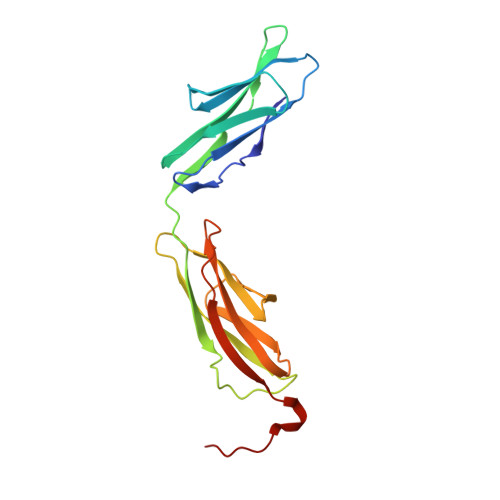Structure and function of the Clostridium thermocellum cellobiohydrolase A X1-module repeat: enhancement through stabilization of the CbhA complex.
Brunecky, R., Alahuhta, M., Bomble, Y.J., Xu, Q., Baker, J.O., Ding, S.Y., Himmel, M.E., Lunin, V.V.(2012) Acta Crystallogr D Biol Crystallogr 68: 292-299
- PubMed: 22349231
- DOI: https://doi.org/10.1107/S0907444912001680
- Primary Citation of Related Structures:
3PDD, 3PDG, 3PE9 - PubMed Abstract:
The efficient deconstruction of lignocellulosic biomass remains a significant barrier to the commercialization of biofuels. Whereas most commercial plant cell-wall-degrading enzyme preparations used today are derived from fungi, the cellulosomal enzyme system from Clostridium thermocellum is an equally effective catalyst, yet of considerably different structure. A key difference between fungal enzyme systems and cellulosomal enzyme systems is that cellulosomal enzyme systems utilize self-assembled scaffolded multimodule enzymes to deconstruct biomass. Here, the possible function of the X1 modules in the complex multimodular enzyme system cellobiohydrolase A (CbhA) from C. thermocellum is explored. The crystal structures of the two X1 modules from C. thermocellum CbhA have been solved individually and together as one construct. The role that calcium may play in the stability of the X1 modules has also been investigated, as well as the possibility that they interact with each other. Furthermore, the results show that whereas the X1 modules do not seem to act as cellulose disruptors, they do aid in the thermostability of the CbhA complex, effectively allowing it to deconstruct cellulose at a higher temperature.
Organizational Affiliation:
Biosciences Center, National Renewable Energy Laboratory, 1617 Cole Boulevard, Golden, CO 80401, USA.
















